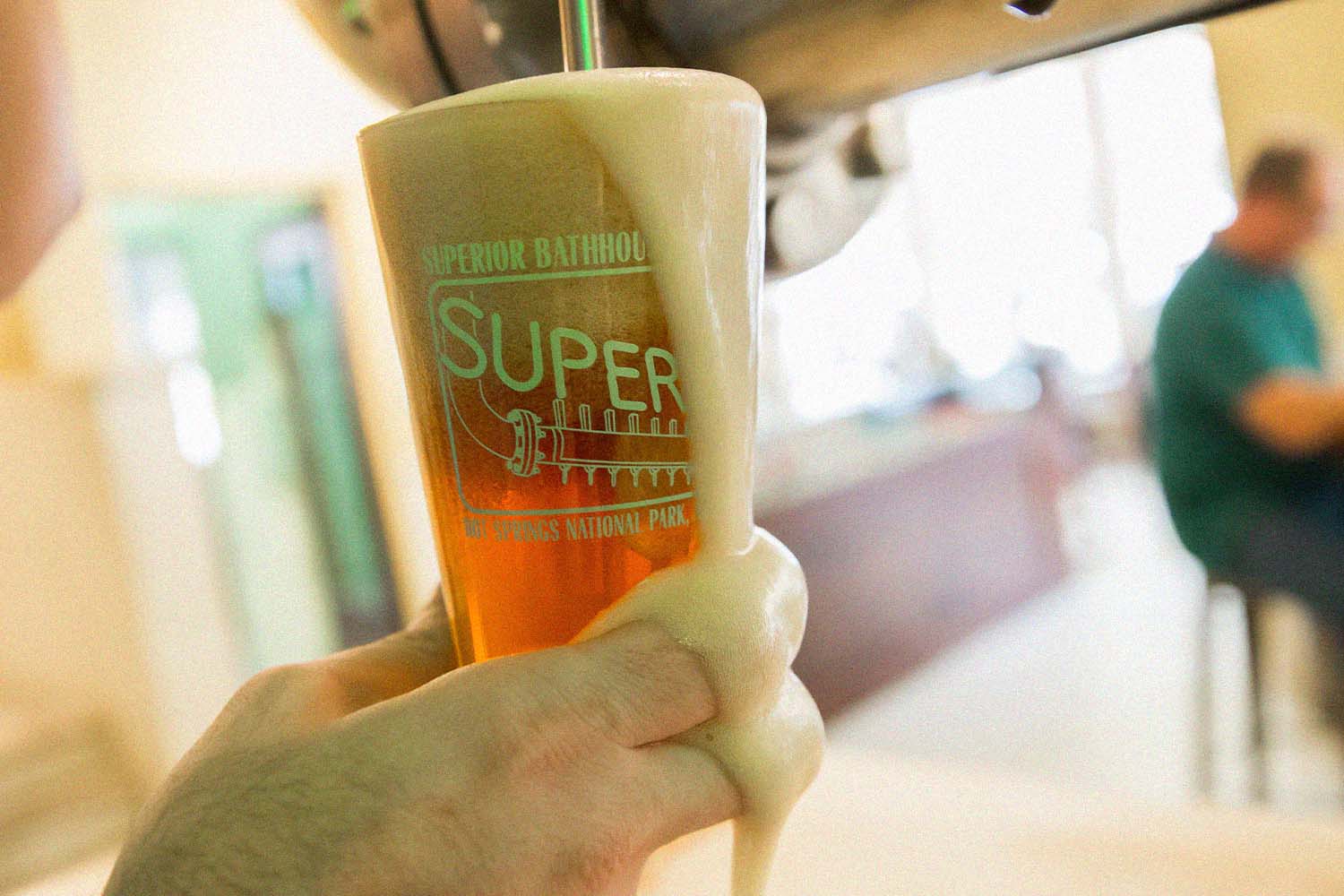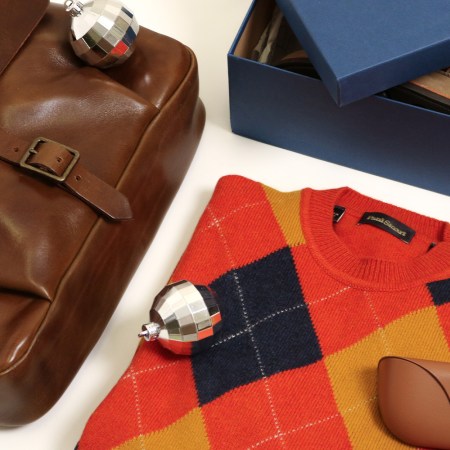Arkansas is a state with its fair share of distinct mystery, intrigue, and lore; a place where immense wilderness shares the spotlight with moonshine, mobsters, and chicken-fried stereotypes. It’s also home to quirky mountain towns like Hot Springs, a supremely random American city that combines gangster history and baseball roots with palatial spas, Tower of Terrifying hotels, and beer brewed with water that fell as rain as the Egyptians were building the pyramids.
Outside of Little Rock, a not-so-little city abounding with urban amenities, much of Arkansas is untouched terrain that lives up to its Natural State moniker. Hot Springs, nestled in the lush Ouachita Mountains, is a unique place that combines both — along with Al Capone-inspired burgers, bathhouses fit for Babe Ruth, and thermal springs that have been mitigating stress since the days of Hernando de Soto. Nicknamed Spa City for its abundance of spring-fed spas, Hot Springs is a hyper-specific kind of Americana in far-flung western Arkansas, where Al Capone and conquistadors once luxuriated, where ornate architecture makes jacuzzis look like Roman baths, and where a national park houses a brewery making beer with thermal spring water.

Hot History
Centuries ago, long before European settlers and mobsters flocked to the mountains, this hilly enclave billowed with steam and babbled with brooks. Thermal spring water, bubbling up from the earth at 143 °F, is so prominent that Native Americans dubbed it “Valley of the Vapors.” Quick to discover the healing benefits of the springs, which produce 1 million gallons of steamy water per day, various tribes gathered here to soak it all in, reaping its powers to aid bone health, promote brain function, ease muscle pain and much more. Rich with minerals like sulfate, lithium, manganese and iron, the waters have long been a soothing balm — and just as the vapors attracted Native tribes, it had the same allure for European settlers.
Hernando de Soto was the first to visit in 1541. As he navigated his way across the southern U.S. in search of gold — and a misguided passage to China? — he wanted to see what all the fuming fuss was about. Long a neutral place of peace for various tribes like Quapaw and Choctaw, de Soto marked a major change when he claimed the area for Spain. Over the ensuing centuries, as more settlers and politicians got wise to the region’s enriching resources, Hot Springs would become the first federally protected reservation in the country — designated by President Andrew Jackson in 1832, it was essentially the first national park, before the National Park Service was a thing.
While the natural springs were protected, development in the valley boomed. Gilded Age architecture and Victorian-style bathhouses popped up along what is now known as Bathhouse Row. It’s a town shaped by water, with an entire economy so oriented around springs that it earned the nickname of America’s Spa City. It’s water that first fell as rain around the time the Great Pyramids of Giza were taking shape, slowly dripping 7,000 feet into the Earth before being super-heated, infused with minerals, and driven back up to the surface, where the present-day elixir is used for soaking and sipping.

What to Do
Like the Las Vegas Strip of Arkansas, Bathhouse Row is the main drag in downtown Hot Springs. The crux of the national park, comprised of several extravagant museum-sized buildings, the lineup is an architectural marvel to behold. Although only two of the eight bathhouses are still used for actual bathing, the rest — like the Fordyce, the Ozark, and the Hale — are divvied into museums, visitor centers, a hotel and a brewpub. A far cry from the earliest “bathhouses,” mere wooden structures situated around individual springs, these new palaces (built between 1880 and 1888) became places of bygone luxury, attracting foreign dignitaries, athletes, and even gangsters like Al Capone and Bugs Moran, who hid out in the secluded town to gamble and bathe.
Today, aside from a few steamy streams and springs along Hot Springs Mountain (which are too hot for bathing or drinking in the wild), most of the thermal water is funneled through underground pipes and into bathhouses, fountains, restaurants and hotels. The best way to experience it is with an old-fashioned soak at one of the two functioning bathhouses, Quapaw and Buckstaff. Reservations are required for both, with Quapaw offering private rooms and a lavish communal area that looks like a super-sized Roman bath, and Buckstaff features private baths and hydro therapy treatments designed to soothe stress and arthritic ailments. Outside the bathhouses, and along the Grand Promenade walkway behind the structures, fountains are available for filling up thermoses and drinking (just be sure to let the water cool).
Since Hot Springs was once a hotbed of mobster activity (with the defunct underground bootlegging tunnels to prove it), the town’s sordid past is among its quirkiest charms. Take a tour of The Gangster Museum of America, an immersive jaunt to the 1930s, when the likes of Capone came to town for illegal gaming, prostitution, and the occasional gunfight. Through videos and exhibits, the museum details the town’s rowdy roots, and how Hot Springs became a hideaway for gangsters looking to skirt the law far away from policed places like Manhattan.
Beyond illicit activity, Hot Springs also has historic ties to baseball. Since the 1880s, coaches brought their teams to soak in the springs, while Babe Ruth played here and Fogel Field served as a stomping ground for Major League spring training. Today, there’s a digital Hot Springs Baseball Trail that takes visitors around town, to places like the Arlington Hotel and Happy Hollow, to learn about the athletes who trained here. Digital codes at each stop reveal audio clips, videos and photos detailing Hot Springs’ heritage as an unexpected baseball mecca.
Bathhouses and baseball aside, Hot Springs is also a haven for outdoor recreation. Nestled in the hilly Ouachitas, the town teems with hiking tails and bike paths. A popular trek is to the top of Hot Springs Mountain, for sweeping panoramas of the Valley of the Vapors — especially from atop Hot Springs Mountain Tower, a 216-foot tall structure where visitors can see 140 miles in every direction. Altogether, there are about 26 miles worth of designated trails in Hot Springs, along with scenic drives up North Mountain and West Mountain.

Where to Eat and Drink
In more ways than one, Hot Springs is a big city masquerading as a small mountain town. This is especially evident in its surprisingly robust food scene, with quality and aesthetic more akin to something you’d expect from a much larger metropolis. The town’s Roaring Twenties vibe is still kickin’ at places like Vault at 723, a swanky supper club-esque restaurant serving candied pork belly over gouda grits and Japanese Wagyu with rosemary whipped potatoes. For the full vintage vibe, book the private table in the literal bank vault. Down the street, The Ohio Club is its own kind of historic vault. Open since 1905 and frequented by both Al Capone and Babe Ruth, the saloon is the oldest bar in the state. Now home to live music and a deep whiskey selection, the watering hole honors its legacy with the Big Al burger topped with Templeton Rye Whiskey sauce in honor of Al’s drink of choice.
Another essential stopover is Superior Bathhouse Brewery. Located inside one of the bathhouses on Bathhouse Row, it’s the only brewery located within a national park, and the first in the world to brew beer with thermal hot spring water, providing the unique opportunity to sip an IPA made from water that initially fell as rain some 4,000 years ago. The food menu exceeds expectations with inventive pub grub like gochujang pork banh mis and BRIE-LT sandwiches with tomato jam.
For something totally different, don your best lederhosen and check out Steinhaus Keller, a cozy subterranean German restaurant with real-deal cabbage rolls, curry wurst and schnitzel. Feeling saucy? Try the pickled egg flight or the German-style meatloaf patties slathered in brown hunter cream sauce.

Where to Stay
With so many historic, gilded buildings, there are plenty of luxurious accommodations to choose from. The Arlington Resort, rising like a vintage beacon at the end of Bathhouse Row, looks like Disney World’s Tower of Terror. Fortunately, instead of fake cobwebs and plummeting elevators, Arkansas’ largest hotel boasts an awe-inspiring grand lobby, a Crystal Ballroom, an elegant restaurant fit for gangster royalty, and its very own thermal bathhouse. For something a tad more modern, check into The Waters, a chic Hilton-owned property with a happening rooftop bar and spacious rooms stocked with free spring-fresh drinking water.
Then there’s the Hotel Hale, an intimate boutique in the Hale Bathhouse on Bathhouse Row. Each of the nine luxury rooms at this suite-specific, brick-clad hotel features hot spring soaking tubs and mid-century furnishings. It’s also home to Eden, an upscale restaurant under a soaring skylight serving inventive novelties like vegan charcuterie platters, Brie and tomato galettes and grilled lamb chops over feta and apricot orzo.
This article was featured in the InsideHook newsletter. Sign up now.
























